In the world of affiliate marketing, metrics are key. They guide decisions and shape strategies. Two metrics often discussed are CTR and EPC.
CTR, or Click-Through Rate, measures engagement. It tells you how many people click on your ads. But is it enough?
EPC, or Earnings Per Click, offers a deeper insight. It focuses on revenue, not just clicks. This makes it a more comprehensive metric.
Understanding Earnings Per Click can transform your affiliate marketing efforts. It highlights which campaigns are truly profitable. This is crucial for maximizing revenue.
EPC is not just about clicks. It considers the quality of those clicks. This means looking at conversion rates and product value.
For e-commerce business owners, Earnings Per Click can be a game-changer. It helps in optimizing ad spend and boosting sales. Digital marketing managers can also benefit.
Staying ahead in digital marketing requires understanding EPC. It’s about more than just engagement. It’s about financial success.
Affiliate marketers, too, should focus on Earnings Per Click. It can lead to higher commissions and better opportunities.
Understanding the Basics: What Is CTR and What Is EPC?
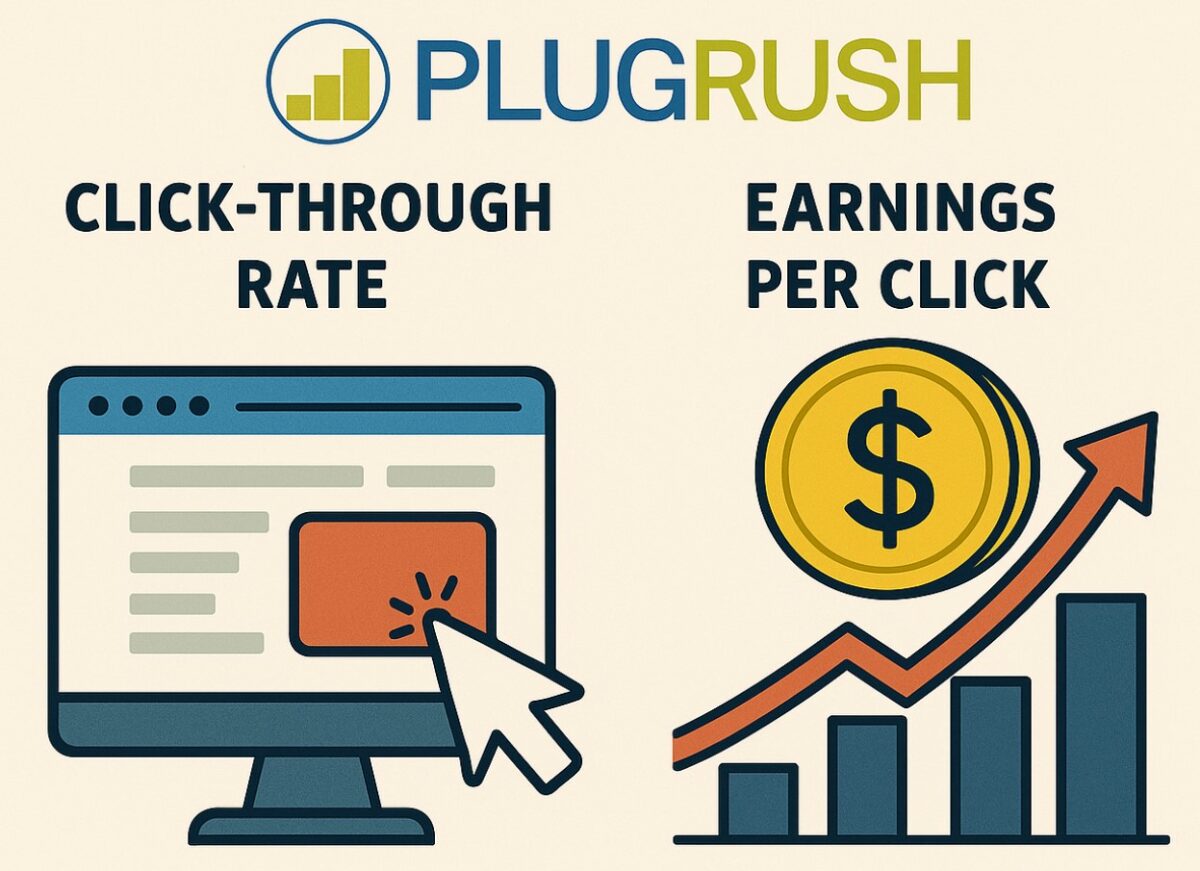
Understanding basic marketing metrics can enhance your strategies significantly. Two crucial metrics in affiliate marketing are CTR and EPC.
CTR stands for Click-Through Rate. It measures the percentage of people who click on an ad. This metric shows the effectiveness of your ad in attracting clicks.
Here’s how CTR works:
- Formula: (Number of Clicks / Number of Impressions) x 100
- Purpose: Indicates how engaging your ad is.
Now let’s dive into EPC, which is Earnings Per Click. It provides insights into revenue per ad click, focusing on financial returns instead of just clicks.
Here’s how Earnings Per Click works:
- Formula: Total Earnings from an Ad / Total Clicks
- Purpose: Reflects the monetary value of clicks.
While both metrics are important, they serve different purposes. CTR is about engagement. EPC is about profitability.
CTR and EPC can complement each other when properly analyzed. Understanding both can help tailor your strategies for better performance.
Different metrics fit different goals. If your focus is engagement, CTR is key. If you’re revenue-driven, it is crucial.
By mastering these basics, you’ll lay a strong foundation for digital marketing success. Keep both metrics in mind but prioritize what aligns with your objectives.
EPC vs. CTR: Key Differences and Why They Matter
Understanding the differences between Earnings Per Click and Click-Through Rate is vital. Each metric sheds light on different aspects of your campaigns.
CTR focuses on engagement. It indicates how well your ad attracts click interest. A higher CTR means more users found your ad engaging.
EPC, on the other hand, drills into profitability. It measures the revenue generated from those clicks. High Earnings Per Click indicates effective monetization of your traffic.
Visualizing the contrast:
- CTR Measures: User interest and ad effectiveness.
- EPC Measures: Revenue efficiency and profitability.
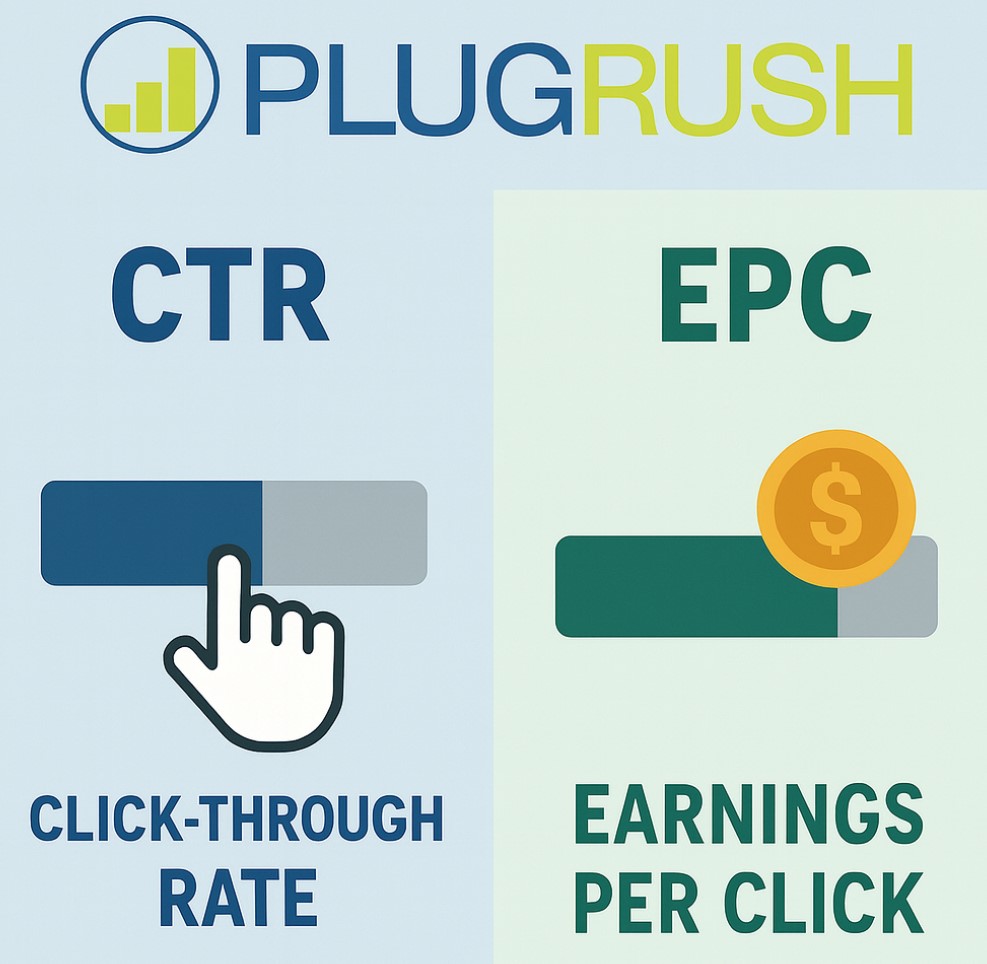
Why does this distinction matter? Well, CTR can be high even if your sales are low. That’s where EPC becomes crucial by highlighting actual earnings.
In affiliate marketing, success isn’t just about traffic. It’s about converting that traffic you purchase into profit. EPC uncovers how well you’re doing financially.
Ignoring it while chasing a high CTR can lead to misleading insights. You might have clicks but no real gains. Therefore, balancing both metrics is essential.
EPC isn’t just another stat. It’s the guiding light for affiliate marketers focusing on real income. Engaging ads are just the starting point.
CTR and EPC complement each other. Together, they provide a fuller picture of your campaign’s true performance and financial impact. Prioritizing it ensures that your marketing efforts translate into meaningful earnings.
Why EPC Is the Superior Metric for Affiliate Marketers
Earnings Per Click holds immense value for affiliate marketers. It shifts the focus from mere clicks to actual earnings. This makes it a more comprehensive performance indicator.
Consider this: two campaigns with identical CTRs but differing EPCs reveal stark contrasts in profitability. One generates more revenue per click, proving more lucrative.
Why does EPC hold such prominence? It’s a direct reflection of your marketing’s financial outcomes. In other words, it ties clicks to revenue, offering clearer insights.
Here are reasons Earnings Per Click stands out:
- Financial Clarity: It shows the true monetary impact.
- Profit-Driven: Focuses on revenue, not just engagement.
- Strategic Decisions: Guides tweaks for maximum earnings.
- Competitive Edge: Keeps you ahead with clear profit data.
For affiliate marketers, Earnings Per Click provides actionable insights. It helps identify which products or offers yield the best returns. This ensures more effective campaigns.
Moreover, a strong Earnings Per Click attracts potential affiliates. They see the potential for higher earnings, making it a desirable metric for any affiliate program.
Adapting strategies based on EPC trends can lead to significant earnings growth. Marketers can adjust targeting and creative elements to boost it.
In summary, while CTR attracts attention, EPC guarantees profitability. For those serious about affiliate success, focusing on Earnings Per Click brings tangible financial benefits. With this metric, marketers align their goals with real revenue, ensuring impactful campaigns. By emphasizing it, you align your strategies with true market value.
How to Calculate EPC in Affiliate Marketing
Understanding how to calculate EPC is key for affiliate marketers. It’s a straightforward formula, yet crucial for gauging success. EPC stands for Earnings Per Click, a vital metric.
To calculate Earnings Per Click, divide total earnings by the number of clicks received. This provides the average earnings for each click on an affiliate link.
Here’s the formula:
- EPC Formula: Total Earnings / Number of Clicks
For example, if you’ve earned $200 from 500 clicks, your EPC is $0.40. This gives insight into the value each click brings financially.
Why is Earnings Per Click calculation important? It provides a clear picture of your campaign’s financial efficiency. It reflects actual monetary performance beyond basic engagement metrics.
To optimize your marketing strategies, regularly monitor and analyze your Earnings Per Click. Use it as a benchmark to assess different campaigns and offers.
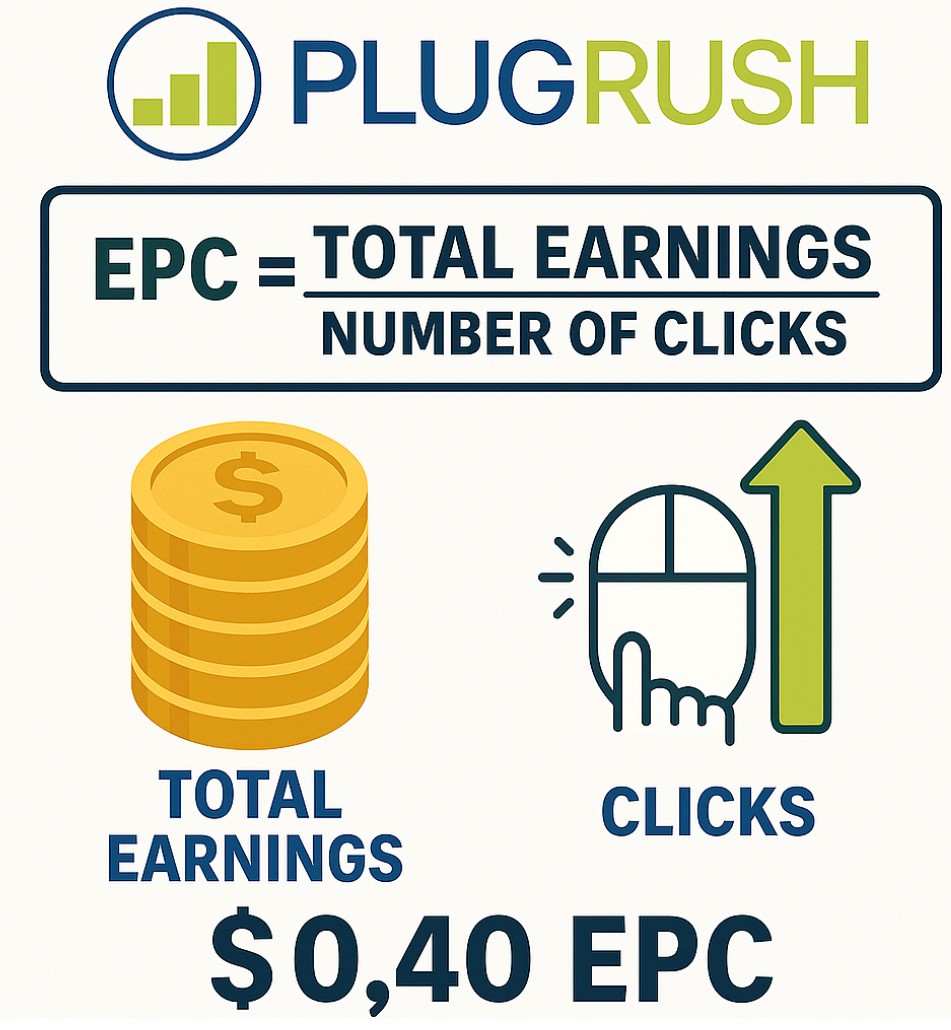
Moreover, comparing EPC across various networks or products can highlight high-performing opportunities. This enables marketers to refocus efforts on the most profitable avenues.
Remember, Earnings Per Click isn’t just a number. It’s a powerful tool for revenue-focused decision-making in affiliate marketing. With precise calculations, affiliates can fine-tune their strategies for better outcomes.
What Does EPC Mean in Affiliate Marketing? Real-World Examples
EPC in affiliate marketing represents the financial potential of each click. It’s a crucial metric for measuring success. To understand it better, let’s explore real-world examples.
Consider a skincare affiliate campaign. Imagine it generates $500 in sales from 1,000 clicks. Here that would be $0.50. This value helps marketers assess campaign profitability.
In another scenario, an affiliate promotes fitness gear. With 2,000 clicks generating $600 in commissions, the EPC is $0.30. Lower than the skincare example, it suggests room for strategy improvement.
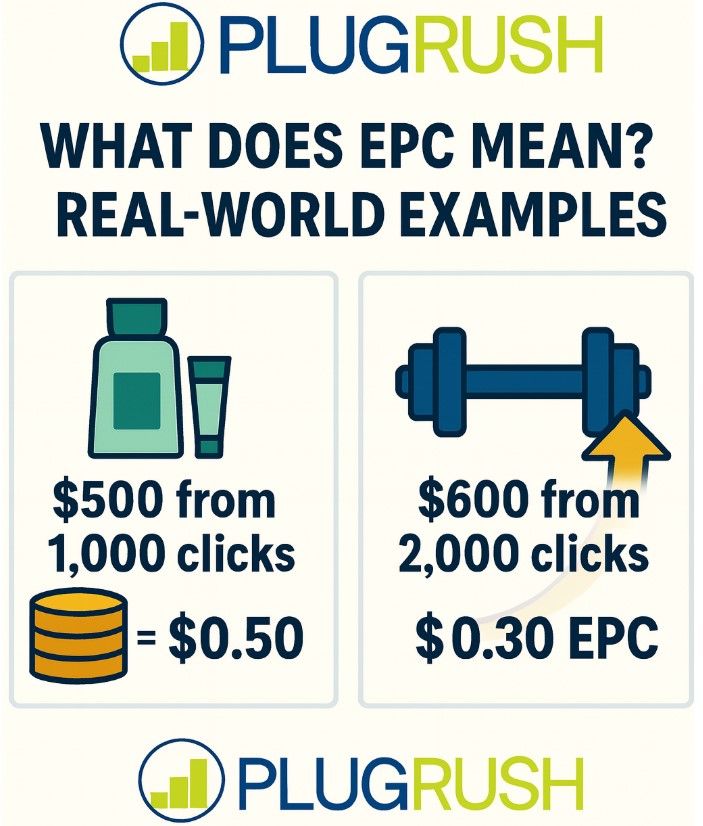
These examples highlight how EPC varies across different products and niches. Affiliates can use it to compare and decide which campaigns to prioritize.
A markdown list summarizing the examples:
- Skincare Campaign: $500 from 1,000 clicks = $0.50 Earnings Per Click
- Fitness Gear: $600 from 2,000 clicks = $0.30 Earnings Per Click
These variations emphasize the importance of monitoring EPC regularly. It offers clarity on which products deliver higher profitability.
By analyzing Earnings Per Click, affiliates can adjust their tactics, such as enhancing ad creatives or refining target audiences. Ultimately, it sheds light on the true earnings potential in affiliate marketing.
Factors That Influence EPC: What You Need to Know
Earnings Per Click is influenced by several factors in affiliate marketing. Understanding these factors can enhance profitability.
Product pricing is a primary factor. Higher-priced products often yield better EPC. This is due to the increased commission per sale.
Another key factor is conversion rates. Higher conversion rates lead to more sales, boosting Earnings Per Click. Optimizing landing pages can significantly improve these rates.
Audience targeting also plays a vital role. Reaching the right audience increases the chances of conversion. This, in turn, elevates the EPC.
The quality of traffic is crucial. Traffic that is highly engaged tends to convert better. This means more revenue per click.
Factors summarizing EPC influence:
- Product Pricing
- Conversion Rates
- Audience Targeting
- Traffic Quality
Ad creatives impact EPC as well. Eye-catching and relevant ads attract more clicks and conversions. This boosts the earnings per click metric.
Regular analysis of these factors can help in adjusting strategies. By focusing on these elements, affiliate marketers can enhance their Earnings Per Click and drive superior revenue outcomes.
How to Improve Your EPC: Actionable Strategies
Improving Earnings Per Click requires strategic action. By focusing on key elements, you can boost it and maximize affiliate revenue.
First, refine your audience targeting. Use data analytics to understand your audience’s preferences and behaviors. Tailor your marketing efforts to these insights for better conversion rates.
Product selection is crucial. Promote high-value and well-received products. This can lead to higher EPC since these products often convert better.
Optimizing your landing pages is essential. Ensure they are user-friendly and persuasive. Highlighting benefits can enhance conversion rates, positively affecting EPC.
Consider enhancing your ad creatives as well. Make them visually appealing and relevant to your audience. This will attract more clicks and improve your Earnings Per Click.
Implement these key strategies:
- Target audience refinement
- High-value product promotion
- Landing page optimization
- Engaging ad creative design
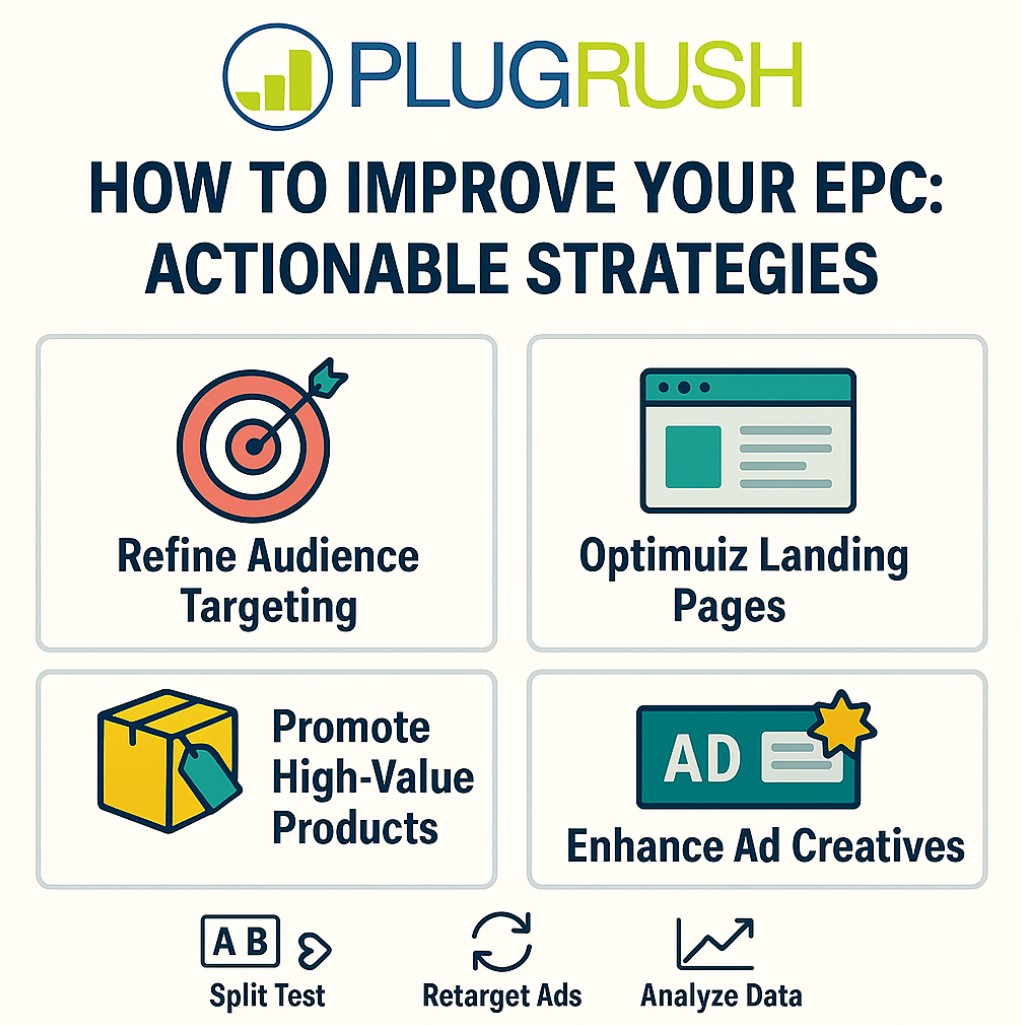
Regular testing and iteration are vital. Perform A/B testing on landing pages and creatives. Analyze the results to discover what works best.
Leverage retargeting ads to reach potential customers who’ve shown interest but haven’t converted. This approach can significantly increase the chances of sales.
Use these additional tactics:
- Conduct A/B testing
- Utilize retargeting ads
- Analyze performance data
Finally, keep updated with market trends. Trends affect consumer behavior and can influence EPC. Staying informed allows you to adapt swiftly to changes.
By combining these strategies, you can create a powerful plan to improve your EPC. This leads to increased affiliate marketing success and higher earnings.
EPC Benchmarks: What Is a Good EPC in Different Niches?
Evaluating Earnings Per Click benchmarks by niche is crucial for affiliate marketers. It varies significantly across industries, guiding decisions on where to focus efforts.
Understanding what constitutes a “good” Earnings Per Click in your niche helps set realistic targets. For example, tech products often have higher Earnings Per Clicks due to higher price points and demand. In contrast, fashion-related niches might see lower.
Having niche-specific insights enables more effective campaign planning. Tailor strategies to align with industry norms to maximize potential.
Key niche examples include:
- Tech products: Higher EPC due to premium pricing
- Fashion: Typically lower EPC but higher volume
- Health supplements: Moderate EPC with steady demand
- Financial services: Generally high EPC given long-term value
Regularly compare your Earnings Per Click performance against industry benchmarks. This practice provides a clear picture of your campaigns’ success and competitiveness.
By understanding niche benchmarks, you can optimize your strategy to achieve better outcomes. This alignment with industry standards facilitates sustainable growth and increased revenue.
EPC Across Major Affiliate Networks: Amazon, ClickBank, CJ, and More
Earnings Per Click values can differ significantly across affiliate networks like Amazon, ClickBank, and CJ Affiliate. Understanding these differences helps in strategically choosing where to focus efforts.
Amazon Associates often has lower Earnings Per Clicks due to its broad range of products with varying commission rates. However, its vast catalog can offset this with higher traffic potential.
ClickBank, known for digital products, typically reports higher EPCs. This is due to higher commission rates and strong conversion rates associated with niche-specific digital offerings.
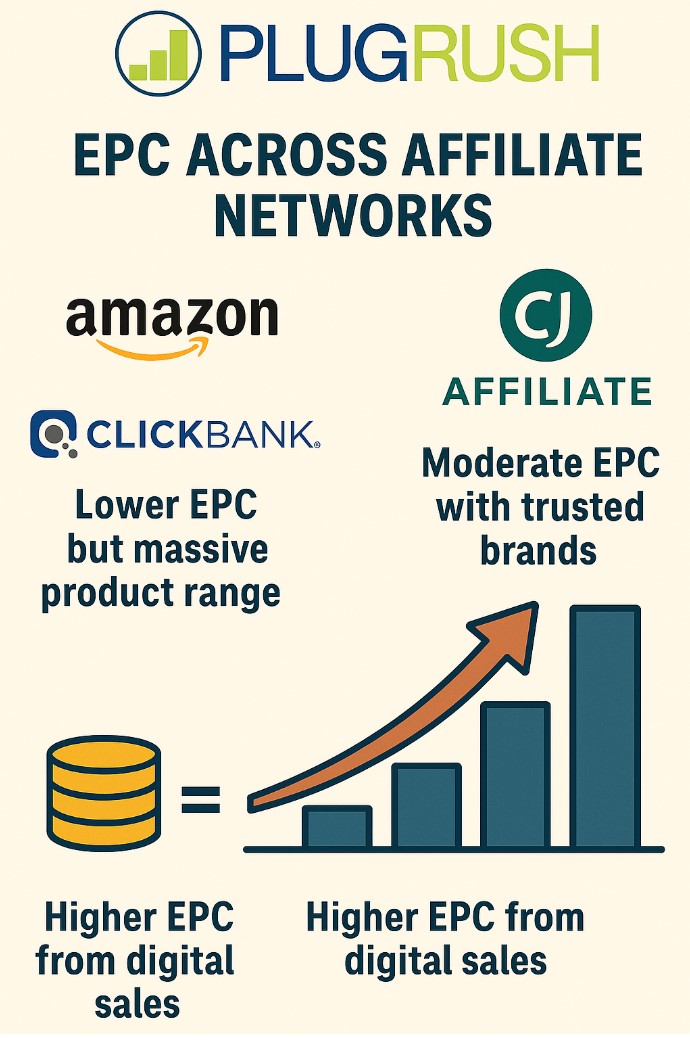
CJ Affiliate, dealing with more established brands, falls somewhere in between. It provides a balance of reasonable Earnings Per Clicks and reputable products.
Consider these network characteristics when strategizing:
- Amazon: Lower EPC but massive product range
- ClickBank: Higher EPC from digital sales
- CJ Affiliate: Moderate EPC with trusted brands
Each network offers distinct advantages. Align your goals with the network that best complements your niche for optimal results. Integrating this insight with your marketing strategy can lead to increased profitability.
EPC and Affiliate Program Selection: Making Data-Driven Decisions
Choosing the right affiliate program is crucial for maximizing your Earnings Per Click. By making data-driven decisions, marketers can align their strategies with the programs that offer the best returns.
To make informed choices, evaluate various programs based on EPC metrics. Look for programs with consistent highs, indicating lucrative opportunities. Low Earnings Per Click may signal less effective promotions or low-demand products.
When assessing potential programs, consider:
- Product Relevance: Ensure products fit your audience.
- Commission Structure: Compare fixed versus tiered commissions.
- Traffic Type: Determine if traffic aligns with program strengths.
Additionally, analyze historical data to identify trends and seasonal fluctuations. This helps in understanding which programs perform well over time. It’s also vital to have flexibility. Adapt quickly to performance changes to maintain profitability. Data-driven choices lead to more successful affiliate marketing campaigns and increased revenue potential. Emphasizing your selection criteria ensures optimized affiliate program performance.
EPC Optimization for E-commerce Business Owners
E-commerce business owners face unique challenges in optimizing Earnings Per Click. Crafting strategies that focus on profitable metrics like EPC can transform your online store’s success.
Start with product selection. Choose high-converting, profitable items to promote, enhancing your EPC. Strong product relevance boosts the likelihood of clicks turning into sales.
Consider these actionable steps:
- Targeted Ads: Create audience-specific advertising.
- Bundling Products: Offer related products together.
- A/B Testing: Compare landing pages for effectiveness.
Improving user experience on your website is also crucial. A smoother checkout process can lead to better conversions. This, in turn, lifts your EPC.
Regularly analyze data to spot trends and opportunities for optimization. Constantly refine your approach based on performance insights. By aligning your focus with Earnings Per Click, you ensure sustained growth and higher returns from your affiliate activities. This approach secures not just more clicks, but more valuable ones.
EPC Optimization for Digital Marketing Managers
Digital Marketing Managers must adapt quickly to capitalize on high EPC. The focus should always be on refining strategies for financial return.
First, conduct a thorough analysis of current affiliate campaigns. Identify where your Earnings Per Click is lacking and dig into the causes. Knowing your weak spots is the first step in correcting them.
Consider the following approaches:
- Advanced Analytics: Use analytics tools to track and refine EPC.
- Traffic Quality: Focus on acquiring high-quality traffic.
- Ad Personalization: Develop personalized ad experiences for your audiences.
Investing in technology can also help. AI tools and machine learning offer nuanced insights, aiding more precise targeting.
Lastly, maintain an agile mindset. Digital landscapes shift quickly, and staying ahead requires constant learning and adaptation. Prioritizing Earnings Per Click ensures efforts are not just visible but also profitable. This metric should guide your strategic decisions, driving not only performance but also efficiency in your marketing endeavors.
EPC Optimization for Affiliate Marketers
Affiliate marketers often grapple with maximizing their earnings. Focusing on EPC is an effective way to enhance revenue streams.
Start by analyzing your current affiliate relationships. Choose programs and products that historically show high Earnings Per Click. This proactive approach sets the stage for better earnings.
Here’s how to boost your EPC:
- Niche Focus: Select lucrative niches with consistent EPC performance.
- Offer Selection: Prioritize high-converting, high-commission offers.
- Content Quality: Produce engaging, targeted content to drive quality traffic.
Another important factor is your audience. Understanding their behavior and preferences can be pivotal. Tailor your promotions to align with their interests, which in turn boosts conversion rates.
Finally, continuous learning is key. Stay informed about market trends and competitor strategies. This vigilance will empower you to make data-driven decisions, ensuring that your affiliate marketing efforts yield the highest possible Earnings Per Click. Always align your tactics with the ultimate goal: maximizing your commission earnings.
Common EPC Mistakes and How to Avoid Them
Many affiliate marketers unintentionally sabotage their EPC performance. Recognizing these errors is the first step to avoiding them.
One common mistake is poor traffic targeting. If your traffic doesn’t convert, your Earnings Per Click suffers. Always aim to attract high-quality, interested visitors.
Another error is neglecting conversion optimization. Even with high traffic, if your landing page isn’t optimized, potential earnings drop.
Additionally, some affiliates fail to update offers. Stale offers may no longer appeal to your audience. Regularly refresh your affiliate links and promotions.
Here are strategies to avoid these pitfalls:
- Traffic Quality: Focus on targeting interested and engaged users.
- Landing Pages: Regularly optimize for better conversions.
- Offer Revisions: Keep offers up-to-date with current audience interests.
Finally, overlooking data analysis can be detrimental. Regularly reviewing your metrics provides insights to refine your strategies, helping you to avoid repeating past mistakes. By being proactive, you can ensure your EPC continues to climb.
EPC and the Future of Affiliate Marketing: Trends to Watch
Earnings Per Click will be pivotal in future affiliate marketing strategies. As the digital landscape evolves, so too must our approach to maximize earnings.
A key trend is the rise of AI in optimizing affiliate campaigns. AI can personalize user experiences, enhancing conversion rates and, ultimately, Earnings Per Click.
Blockchain technology is also making waves. By ensuring transparency and security, it builds trust with consumers, positively impacting EPC.
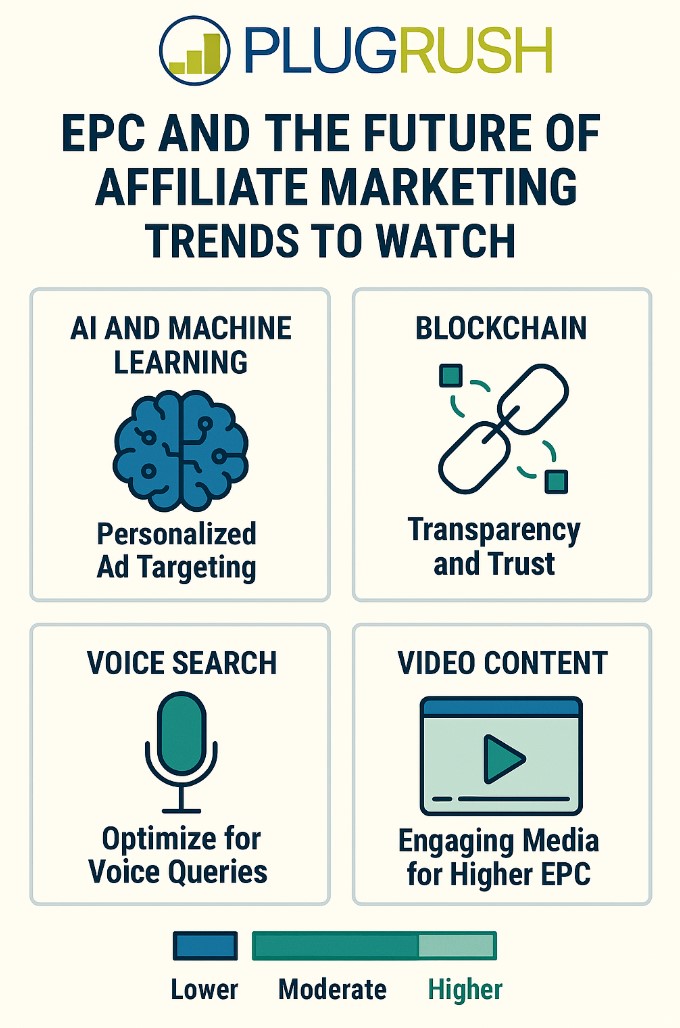
Consider the following trends shaping the future of EPC:
- AI and Machine Learning: For personalized ad targeting.
- Blockchain: Enhancing transparency and trust.
- Voice Search: Adapting content for voice-activated searches.
- Video Content: Engaging users through dynamic media.
Voice search is another potential game changer. Optimizing content for voice search interfaces can open new avenues for affiliate marketers to reach their audience effectively.
In addition, video content continues to be a compelling medium. By integrating affiliate links into engaging videos, marketers can boost viewer interaction and elevate Earnings Per Click.
Conclusion: Why EPC Should Be Your North Star Metric
In the competitive world of affiliate marketing, Earnings Per Click shines as a guiding light. Prioritizing it over CTR ensures that your strategies are driven by profitability, not just engagement.
Understanding EPC allows marketers to fine-tune campaigns for maximum earnings. It highlights the real impact of your marketing efforts on revenue, which is critical for sustained success.
Key reasons to focus on EPC include:
- Revenue Optimization: Identifies high-earning campaigns.
- Strategic Insight: Offers clear performance indicators.
- Market Adaptation: Guides adjustments to changing conditions.
By making EPC your North Star metric, you align your marketing efforts with financial goals. It’s more than a metric; it’s a strategic tool to navigate the complexities of the digital advertising landscape effectively. Embrace Earnings Per Click and watch your affiliate marketing thrive with focused, profitable growth.




